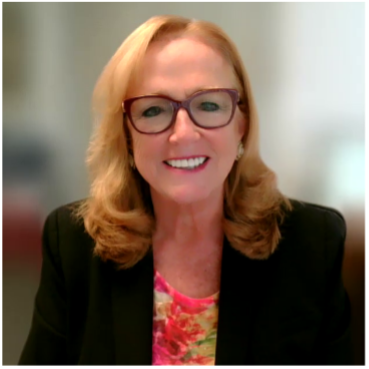
A message to CEOs of Small Credit Unions
An OP-ED
By Susan Mitchell, CEO of Mitchell, Stankovic & Associates
Did you know that there are about 3900 credit unions under 100 million with over $84 billion in assets? * THAT’S not a small number. In fact, as a group you are the second largest credit union in the industry. Your voice can be the loudest across the United States and when you add the international credit movement’s voice, it will shake and shape the world. People need people who are energized to help each other. That’s the key! One voice or another “small credit union initiative” is not going to make change. We must be united, to stand up for our members and say: No financial deserts. No person without financial access. No family denied a way to work hard to build a better life. No choice other than predatory offerings. In fact, we should emphatically say out loud and clearly: Everyone deserves access to a cooperative financial institution where people work together to build generational wealth, to own a home, to have a car, to work, to see our children get an education and to ensure our grandchildren know credit unions can change lives. Don’t you see, it all depends upon small credit union leadership collectively saying no to apathy, no to being pushed aside or deemed less important, because it is you who brings substance to the cooperative business model and saves the tax exemption and without you, it is lost and so is the most critical aspect of serving those in need, small credit unions.
In a break with long-running trends, credit unions with less than $10 million in assets reported the strongest growth in loans and net worth over the year ending in the fourth quarter of 2023
NCUA Quarterly Credit Union Data Summary 2023 Q4
Individually with fewer assets and less members, your credit union is often seen as less significant, not worth saving and with no life savings the only survival method for you, your people and your members is to merge. THIS IS NOT A BAD strategy, and in some cases, it is the only way to save jobs and secure access to financial services for your members.
I am tired of the headlines that crucify long term CEOs who have put their credit union first, over themselves and their families for often more than 40 years. You have struggled with having the time to think, rather than write a succession plan. You are changing light bulbs at that same time as keeping your data processing system running. Someone calls in sick, there is only you or another couple of people to run the credit union that day. Yet, you all believe so much in the hundreds, sometimes thousands of people who you know by name who are members of your credit union. You bleed credit unions!
It’s not just about keeping the tax exemption, it’s about maintaining a cooperative system that is at risk of going away and hurting people it serves; loyalist from the founding group, the middle market and underserved consumer, a diversified segment, students who don’t qualify with no credit history and underserved people in the US. Politicians talk about saving small businesses, well we need to raise our voices, be heard – not complain but to offer a solution.
After 30 years of working with credit unions, volunteering, and using my energy to ensure gaps are identified and solutions designed, providing small credit unions the resources they need took top priority for us after the Underground in DC, March of 2024. It seems that all the efforts and all the words are not going to stop small credit union closures; not the regulator, not the trade associations and not the politicians or even the well-meaning people who care. Instead, it must be you, rolling up your sleeves and tackling it together with us. You have my commitment and the commitment of a working group of over thirty industry thought leaders, that we will present a well-rounded solution to deliver change, but it is up to you!
When you say small credit unions are going away, it invokes emotions: fear, anger, frustration, outrage, apathy, and defensiveness that often shuts down the conversation. That cannot happen now. We cannot listen to the nay sayers who have tried it before or say credit unions will not activate. Instead, we say, that was then, and this is now.
Cybersecurity and reputational risk of $80 billion in member’s money indicates there is no time left. The clock is ticking, and futurists predict there will be less than 3000 credit unions by the year 2030. Down from 4,712 in 2023. Can you believe that? This is the background I wanted to share before October 26th at the Underground in Las Vegas where we will announce a white paper prototype for a modernized Credit Union Shared Services (CUSS) Model.

CUSS is a four-part solution, not a four-letter word. The highest priority items identified that will have greatest value immediately are:
- FRACTIONAL CEOS / CFOS, CTOS, EXECS – Succession planning is needed, for sure, but it is tough to attract CEO level experience, respond to cyber threats and develop talent that is willing to dedicate 24/7/365 to a credit union that pays lower than a branch manager’s salary at a big bank. This is a difficult truth, but both boards and NCUA must face the facts. In some cases, succession planning means merger planning because it is not realistic. Instead, we know strategic planning can be done to develop a revolutionary business model that gives Boards the oversight needed and NCUA the financial examination process to ensure safety, soundness, and security. There are a multitude of trusted advisors and consulting services that will engage with the volunteers to ensure appropriate governance and business continuity while recruiting future volunteers to serve on Boards and Committees. Why don’t we expand the authority of current CEOs like Jon Hernandez in CA who leads three well-run small credit unions (CalCom, Nikkei and Mattel (combined assets at $198 million AND 14,000 members)? He manages three separate external audits and regulatory exams, two NCUA and one state charter. Jon Hernandez added, “I get asked a lot “Why don’t you just merge them together?” and my response is that each CU serves its own niche. CalCom serves Healthcare & City Workers; Nikkei serves Japanese-American Community and Mattel serves Mattel Employees & Family and they’re able to sustain their operations, partly due to sharing of resources and better negotiated vendor agreements.” Jon continued, “I forgot to mention that Nikkei introduced its other brand “Mabuhay CU” to serve the borrowing Filipino American community to compliment the non-borrowing Japanese American community in June 2019. Since then, we have increased our loan portfolio from 20% to 80%.” There can be success if we change the culture of acceptance around fractional leadership.
- MODERNIZED TECH STACK – Utilizing the CUSS portal, access to industry leading middleware or prepopulated and mapped API network of vendors will deliver instantaneous value by reducing non-recurring engineering cost associated with implementation into vertical tech stacks. Pre-negotiated consumptive pricing model for the core, vetted and approved vendors will give flexibility to choose what works best for you. The beauty of this API mapped structure is it does not stop here, there are all types of ancillary and sub-processes that can be included, added, built to remain relevant. Secure connectivity to these other user experience or fractional services will be tied in utilizing a negotiated consumptive pricing and resources pool of middleware organizations. This familiarity and point of resource will maximize integration speed and security. “This is not an attack on legacy, it is a question of relevance. We all want to believe and hold in highest esteem legacy leadership and legacy operations, but it is time to update our thinking,” emphasized Jennifer Oliver, CEO of Rize Credit Union. “Something needs to change!! Small credit unions should all have access to knowledge, resources, and the latest technology. When we level the playing field, we can support a healthier credit union system.”
- Centralized BACK-OFFICE Functions – It is crazy that credit unions have hundreds of vendors to manage and the liability that comes from that exposure. Recently I learned from a credit union CEO that a plumbing maintenance company’s email account was hacked, and bad guys were able to get into the credit union’s member data. That seems ludicrous, but not really, there is a non-stop assault on financial data. Then there is the fact that backups are not real time, instead hacks can take the credit union down for days. Common sense says that centralizing back-off functions should be a slam dunk, but it is not. Collaboration and personalization will be required, but we have hundreds of credit unions doing it today. Call centers can bring AI, marketing can be automated, collections, compliance, and the list goes on, just ask Liz Winninger, CEO of Xtend, who serves credit unions with these services. “Our shared services allow credit unions to focus on their members and the member experience versus back-office operations,” noted Liz, “The model strengthens the organizational structure, reduces cost and gives access to state-of-the-art tech services.”
- RETIREMENT PLANS – I am sick of headlines that vilify some CEOs for compensation payouts. There was a $20 million in assets credit union that I worked with to successfully complete a merger. The CEO had run the CU for 40 years and although the Board had approved the funding of a SERP, it never happened due to a recession. When the merger letter of intent was written, I recommended that the assuming credit union payout the approved compensation because the CEO had minimal retirement, sacrificing for the CU. It’s an unintended consequence of the spirit of credit union managers who love what they do and don’t consider it work, instead it’s their extended family. I say, shame on the industry for not taking care of these selfless credit union managers who have given of themselves, sacrificed funding of the SERPs or 401Ks because their credit unions could not afford it. With volunteer boards, they too want to help and appreciate their CEOs but succumb to pressures of the financials and NCUA oversight. I just attended the America’s Credit Union Museum’s HERSTORY induction and learned yet another story of my credit union comes first, my members come first, we cannot afford to fund my retirement! It is an inconvenient truth and I am appalled at an industry that hasn’t done something to support these wonderful humans who have sacrificed themselves for their members. We need transparent and relevant retirement plans that demonstrate we value the long careers of our dedicated executive leaders who have sacrificed to serve members and fought the bankers for 100 years to retain the tax exemption so it could be used for good as a cooperative, not-for-profit. This industry retirement plan will lighten the need for bogus payouts that are labeled as executives selling out when in most cases the funds supplement a meager social security pension. Barb Lowman has long been an advocate of creating retirement plans for small credit unions and she shared, “We do the work, show the plan to the Board but it often ends with good intentions, not funding. We can do better.”
Yes, these times are consequential and as we think of real solutions, we must show up and demonstrate our desire to save credit unions. It will only be done by driving scale and STANDING UP, using our voices. We have scheduled the time, written the white paper, created a road map for the future, but it is what happens next that matters.
The momentum starts on October 26th when Mitchell, Stankovic and Associates and our vested partners release the modernized CREDIT UNION SHARED SERVICES white paper and use thrill the world to broadcast it worldwide. There are so many reasons and excuses not to attend, but I call BS! It must be the small credit unions who lead the charge, and all credit unions / partners / retired CEOs / believers who demonstrate for the right to be a cooperative that serves ALL people. Past and future generations depend upon us now…

Join us in Las Vegas to stand together for small credit unions. Please hear me and heed this call to action! Registration is free for those who read this article and say, YES, I will be there!
Comp Code: 24CUSS

ABOUT THE AUTHOR – SUSAN MITCHELL
Susan is a passionate believer in making a difference! CEO of Mitchell, Stankovic & Associates, innovative consulting services, strategic planning, board governance, and online education. She is a successful entrepreneur who started two companies and forged alliances with Fortune 500 companies nationwide. Mitchell facilitated the Global Future Forum; an international CU think tank and created the Underground to engage thought leaders in authentic dialogue regarding impactful business practices. Susan is on the Board for the Worldwide Foundation and is the founding Chair of GWLN, with 5,000 members from ninety countries. In 2017 GWLN received the Distinguished Service Award, the highest honor given globally for credit union service. Susan received the inaugural Diversity and Visionary Award from the CA/NV CU League. In February 2018, Mitchell was recognized for her activism with the prestigious NCUF’s Outstanding Individual Lifetime Achievement Award. In 2022, Susan was inducted into America’s Credit Union Museum HERstory.
